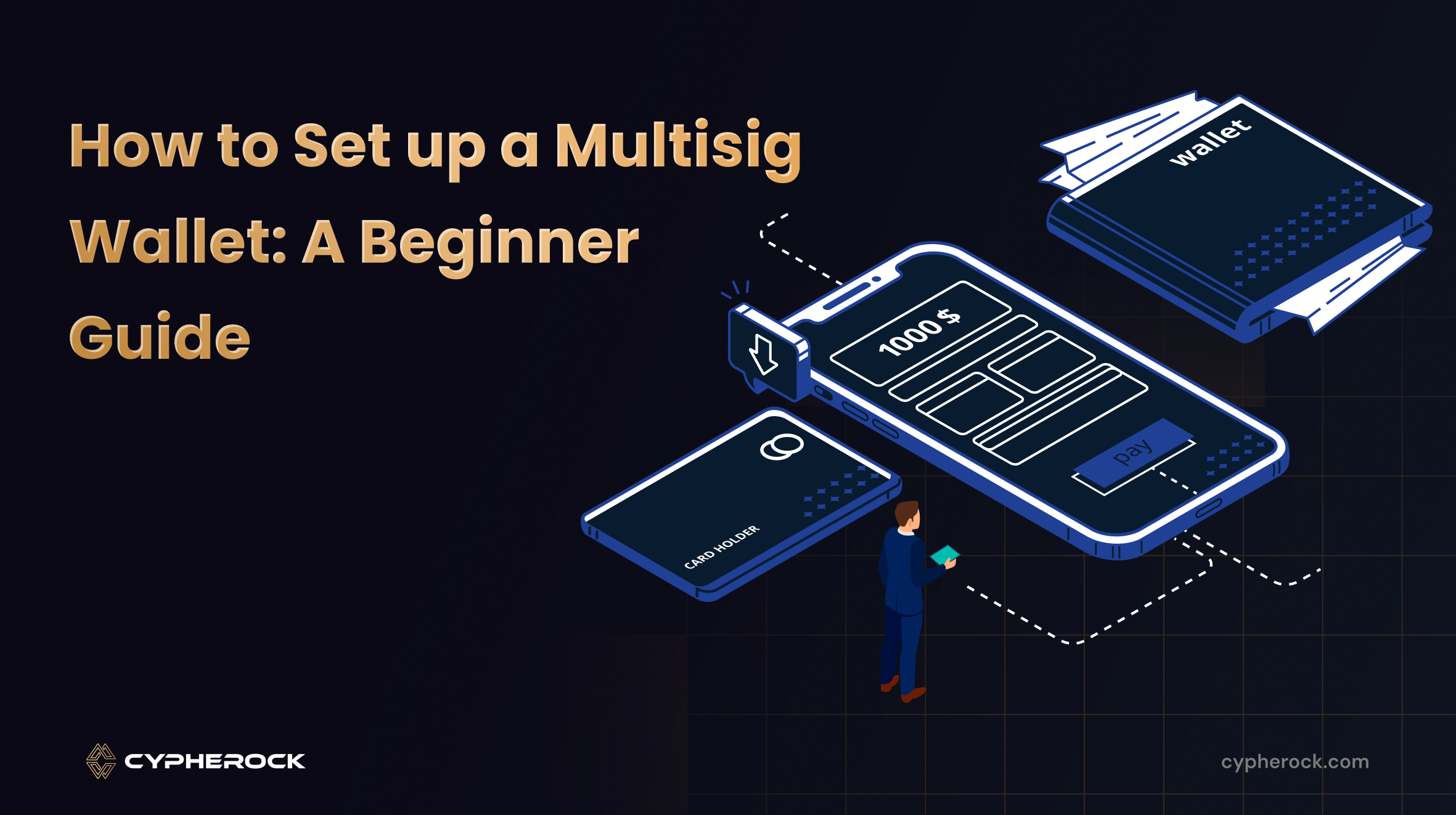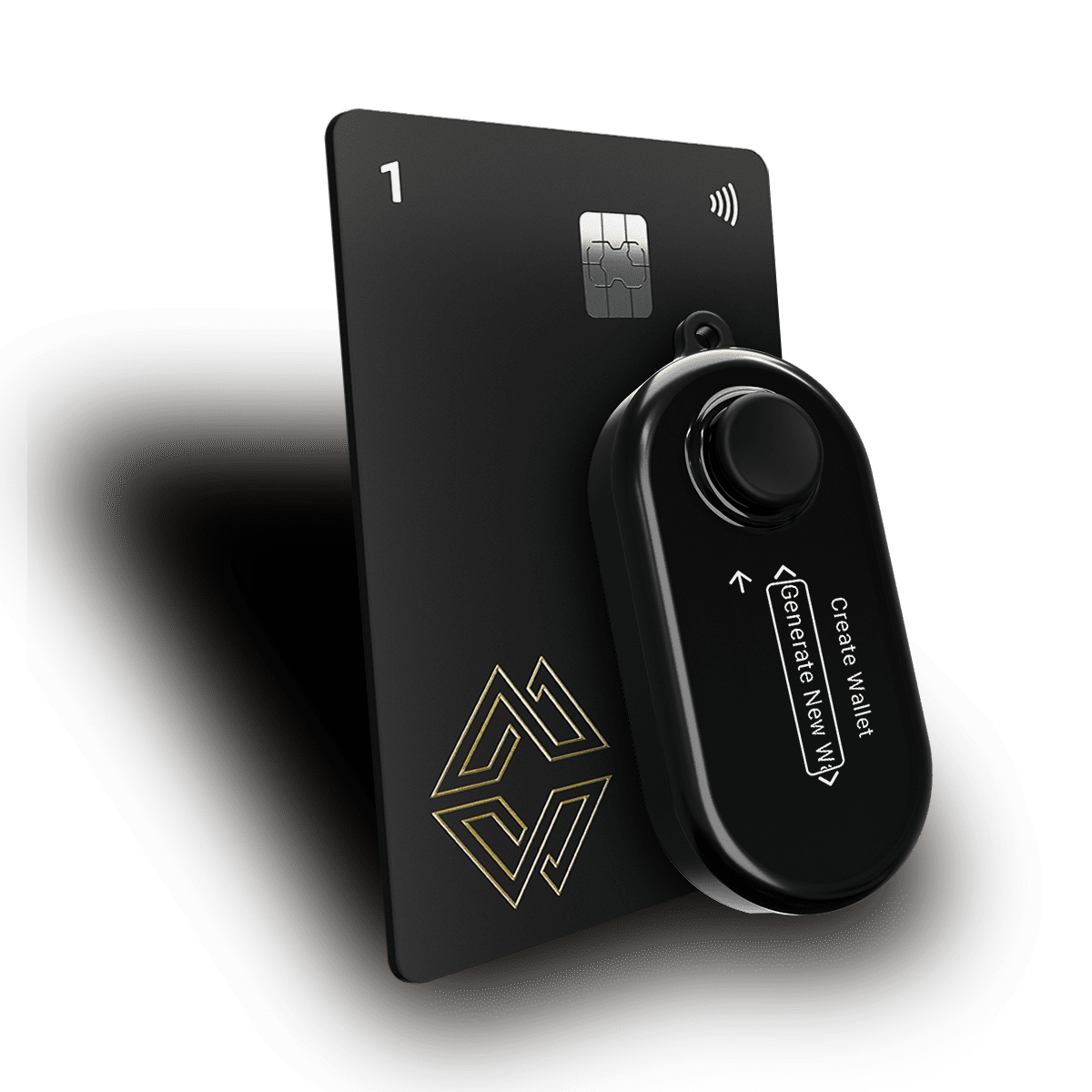

Did you know that a large portion of cryptocurrency thefts occur due to the compromise of a single private key? With the rise of crypto adoption, securing your assets has never been more crucial, and that's where multisig wallets come in. A multisig wallet provides a higher level of security by requiring multiple private keys to authorize a transaction, greatly reducing the risk of theft or accidental loss of funds.
Understanding how to set up a multisig wallet is essential for anyone serious about protecting their digital assets. By distributing control among multiple key holders, you can prevent a single point of failure and enhance the safety of your cryptocurrency.
In this guide, we’ll cover what a multisig wallet is, how it works, the security benefits it offers, and walk you through the exact steps to set one up. By the end, you’ll know how to start using a multisig wallet to safeguard your crypto and ensure your funds are in the safest hands possible—yours!
A multisig wallet (short for multi-signature wallet) is a type of cryptocurrency wallet that requires more than one private key to authorize a transaction. In a regular wallet, you only need one key to send or receive funds, but with a multisig wallet, multiple keys must be used together to approve any movement of funds.
Think of it like a safe with several locks—each lock needs its own key, and you can’t open the safe unless all the necessary keys are used. This adds an extra layer of security since no single person or device has full control over the wallet. For example, in a 2-of-3 multisig wallet, three keys are created, but only two are needed to authorize any transaction.
Multisig wallets are commonly used in situations where multiple people need to agree on a transaction, such as in joint accounts or business operations. It can also be used to distribute responsibility among devices or trusted individuals, ensuring that even if one key is lost or compromised, your funds are still safe.
A multisig wallet works by using multiple private keys to control access to funds, meaning that no single key can authorize a transaction by itself. To understand this better, let’s break down the process.
When you create a multisig wallet, several private keys are generated. These keys can be held by different people or stored on separate devices. For example, in a 2-of-3 multisig setup, three private keys are created, but only two are required to approve a transaction. This prevents any one key from having full control over the wallet.
To send funds from a multisig wallet, a predefined number of keys (or signatures) must be used to approve the transaction. For instance, in a 3-of-5 multisig wallet, three out of five key holders must sign off to approve any transaction. This adds an extra layer of security because multiple approvals are needed, which reduces the chance of unauthorized access.
Multisig wallets are flexible in terms of how they’re set up. You can choose different configurations based on how many keys are needed to sign a transaction. Common setups include:
The flexibility allows you to customize the wallet depending on your needs, whether it's for personal security, shared accounts, or corporate governance.
The keys can be distributed among trusted parties or stored in different locations. For example, one key could be stored on your hardware wallet, another on a mobile wallet, and a third with a trusted friend or business partner. This way, if one key is lost or compromised, your funds are still safe because the other keys are needed to approve any transaction.
Because multisig requires multiple signatures, the risk of losing access to your funds is significantly reduced. Even if one key is lost, the others can still be used to recover access to your wallet. This makes multisig wallets particularly useful for those who want to protect their funds from both external attacks and internal mistakes.
Multisig wallets provide you with a strong layer of security compared to regular wallets. By using multiple private keys to authorize transactions, you can significantly reduce the risks that come with managing cryptocurrency. Here are the key security benefits you’ll get by using a multisig wallet:
With a single-signature wallet, if your private key is lost or compromised, all of your funds can be accessed by the wrong person. In a multisig wallet, however, no single key can authorize a transaction. This means that even if one key is stolen or lost, the other keys are still needed to move any funds, protecting you from losing access.
A multisig wallet helps protect you from hackers because they need access to multiple private keys in order to steal your funds. By storing the keys in different locations or sharing them with trusted individuals, you make it extremely difficult for an attacker to compromise all the keys required to approve a transaction.
If you’re managing funds for a group or business, multisig wallets are ideal for preventing any one person from making unauthorized transactions. You can set up the wallet so that multiple people must sign off on any movement of funds, ensuring that no one can act alone. This protects you from internal fraud or unauthorized actions.
Planning for the future is easier with a multisig wallet. You can distribute keys to trusted family members or legal representatives, ensuring that your loved ones can access your cryptocurrency in the event something happens to you. This way, you maintain control while also providing a secure way for your assets to be passed on.
Multisig wallets help protect you from mistakes. Since multiple signatures are needed to approve transactions, it’s harder to accidentally send funds to the wrong address or authorize an incorrect transaction. You have time to double-check and confirm everything before the transaction is approved.
If you’re managing a shared account with friends, partners, or a business, a multisig wallet ensures that no one can move funds without group approval. Requiring multiple signatures adds transparency and accountability, which is great for maintaining trust and security in shared financial situations.
Setting up a multi-sig wallet can sound complex, but following these steps will help you get started quickly and securely.
Select a wallet provider that supports multi-sig functionality and works with the cryptocurrency you plan to store.
Ensure the provider offers reliable security features and allows customizable multi-sig configurations.
Choose how many private keys will be generated and how many are required to authorize a transaction.
The wallet will generate private keys according to your chosen configuration.
Store or share the private keys securely:
Before transferring large amounts of cryptocurrency:
Once testing is successful, your multisig wallet is ready for use. Remember:
After learning how to set up a multisig wallet, it's important to understand its limitations. While multisig wallets offer excellent security and flexibility, they also come with drawbacks you need to consider before fully committing to this method of managing your cryptocurrency.
Setting up a multisig wallet can be intimidating, especially if you're new to crypto.
It involves generating and managing multiple private keys, which might be overwhelming if you lack technical knowledge.
Transactions with a multisig wallet often take longer to approve.
You need multiple signatures, which can cause delays, especially in situations requiring quick access, like during market changes.
Losing keys in a multisig wallet setup could lock you out of your funds permanently.
For instance, in a 2-of-3 setup, if you lose two keys, the wallet becomes inaccessible, even to you.
Not all cryptocurrencies or wallet providers support multisig functionality.
This limits your ability to manage certain tokens or use multisig wallets across all blockchain ecosystems.
If you share a multisig wallet with others, delays or disagreements among keyholders can slow transactions.
This makes it less ideal for situations requiring instant decision-making.
If you’re concerned about the challenges of multisig wallets, alternative technologies like Shamir Secret Sharing (SSS) might be a better fit.
Shamir Secret Sharing (SSS) is a cryptographic method that splits your private key into multiple "shares."
You only need a specific number of these shares to recover the key. For example, in a 2-of-5 setup, any two shares can restore access to your wallet.
Both multisig wallets and Shamir Secret Sharing have their strengths. Multisig wallets are ideal for shared accounts or businesses, while SSS offers greater simplicity and resilience for personal use. Consider your security needs, technical expertise, and the use case before deciding which method suits you best.
The Cypherock X1 hardware wallet provides decentralized security utilizing the Shamir Secret Sharing. With features like decentralized seed phrase backup and key storage, it’s the ultimate choice for safeguarding your crypto.
By understanding the limitations and alternatives, you can confidently choose the best way to protect your cryptocurrency holdings.
Now that you’ve set up your multisig wallet, it’s important to follow some best practices to keep your funds safe and ensure everything runs smoothly. Here are some key tips for using a multisig wallet effectively:
By following these best practices, you’ll ensure your multisig wallet remains secure and reliable, protecting your funds from both external threats and human error.
Multisig wallets are a powerful tool for securing cryptocurrency, but they come with challenges like complex setups, key management issues, and limited compatibility. While they offer unparalleled protection against theft and fraud, these limitations can make them less suitable for all users.
Fortunately, alternative solutions like Shamir Secret Sharing address many of these issues, providing a simpler yet equally secure way to manage your private keys. By weighing the strengths and weaknesses of each method, you can choose the right approach to safeguard your assets.
Whether you opt for a multisig wallet or Shamir Secret Sharing, the key is to stay proactive about crypto security. By following best practices and using the tools that fit your needs, you can protect your digital assets against risks and ensure peace of mind in the evolving crypto landscape.
Multisig wallets are much harder to hack than single-signature wallets because they require multiple private keys to authorize a transaction. For a hacker to steal funds, they would need access to multiple keys, which are often stored in different locations or with different people. However, no system is entirely foolproof, so it's important to follow security best practices.
The main downsides of multisig wallets are complexity and convenience. Setting up and managing multiple keys can be challenging, especially for beginners. If a key is lost and there’s no backup, you could lose access to your funds. Additionally, transactions may take longer to process since multiple signatures are required.
The primary vulnerability of multisig wallets lies in key management. If multiple private keys are stored improperly or if key holders are untrustworthy, the wallet could still be compromised. In rare cases, bugs in the wallet software or improper setup could also create security risks. Proper key distribution and following security protocols minimize these vulnerabilities.
Start securing your crypto journey today—visit Cypherock X1 to learn more.
Connect with us:
Twitter: @CypherockWallet
Telegram: Join the Community
